LinkedIn rolls out new school selection services for prospective students
Professional social networking site LinkedIn has introduced some impressive new services for its high school and university-aged users: Decision Boards, University Outcome Rankings, Field of Study Explorer, and University Finder. This ICEF Monitor article will explore the new features, and consider some of the implications for universities hoping to benefit from these new school selection tools.
Last year, we reported on LinkedIn’s launch of University Pages and its new Terms of Service which allow users as young as 13 to use the site. That article remains a good starting point in understanding what universities can do with their pages; today’s post is about what’s happened since.
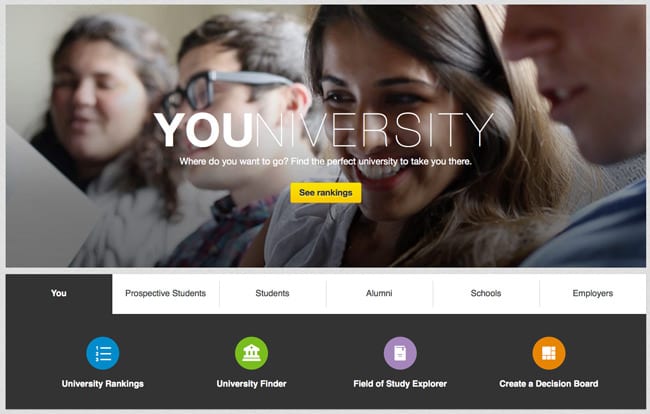
University Pages evolve with LinkedIn’s growing user base
At initial launch of the service in 2013, there were 200 universities on LinkedIn University Pages; now, there are 25,000. In 2015, the social network boasts over 300 million users across the world, more than half of whom live outside the US, and 39 million LinkedIn users are students or recent graduates. As of 2014, the countries with the most LinkedIn users are the US (93 million), India (24 million), Brazil (16 million), the UK (14 million), Canada (9 million), France (7 million), and Spain, Italy, Mexico, and Australia (6 million each). As these numbers suggest, the penetration of the service, in relation to the total number of Internet users in each country, is relatively modest outside of the US and Canada. It remains, however, an important channel for current and aspiring members of a number of communities and professional groups. As their University Pages user base has grown, LinkedIn has been busy working on increasing the relevancy and power of the services available to students. It has done so relying on its huge data bank of users as well as its inherent focus on careers and networking.
New services respond to students’ long-term career goals
People are generally on LinkedIn because they want to strengthen their professional status and/or improve their career prospects. And this motivation, of course, is highly present among students, who perhaps more than ever before are determined that their education paves the way to the jobs they want – and who are often more inclined to consider study abroad to improve their career prospects.
For these students, LinkedIn is becoming a more relevant place to research the universities most suited to the jobs they desire.
LinkedIn’s new services include:
Decision Boards: Students can compile all their resources and thoughts about potential schools on Decision Boards, and also ask peers, alumni, or advisers for advice in helping them narrow their choices.
LinkedIn explains: “Using a combination of organisational, social and insight tools, students can ‘work the problem’ from start to decision. Students can share their evolving thought process with trusted advisors, and meet future classmates for inspiration and commiseration.”
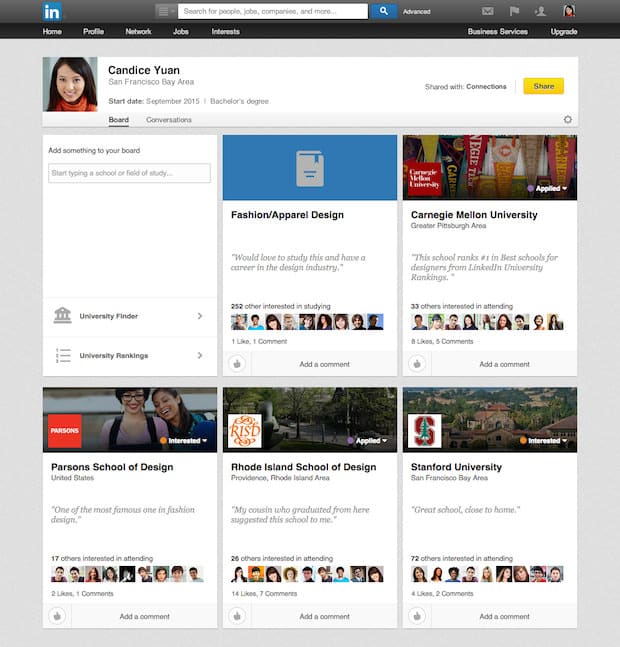
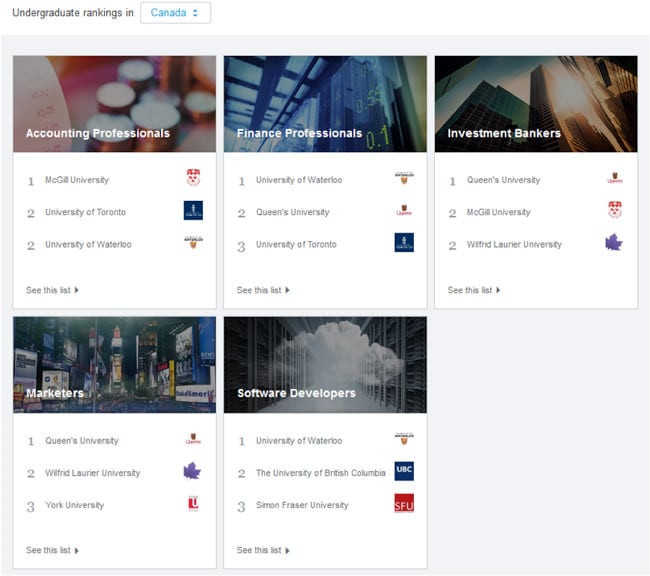
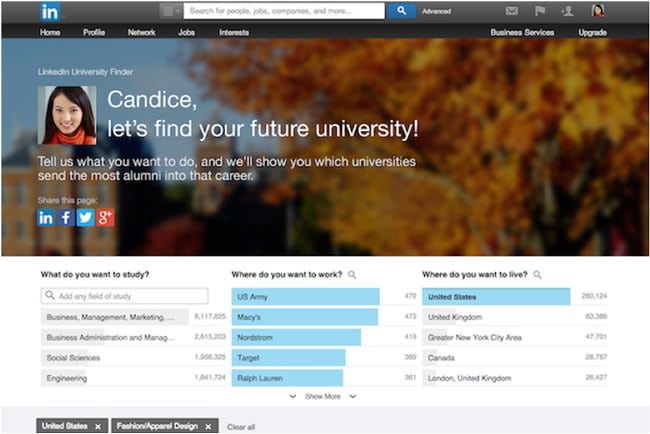
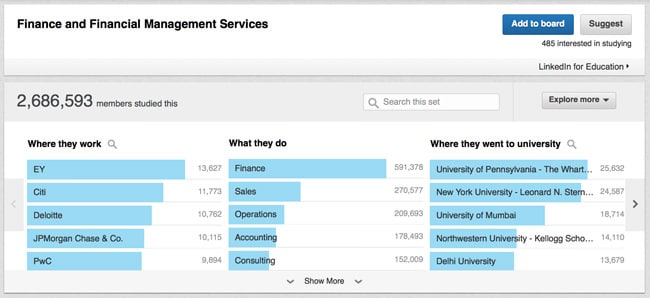
How to leverage University Pages’ new power
A recent post on Higher Education Marketing illustrates the potential benefits to schools of appearing high in their University Outcome Rankings: “LinkedIn’s University Outcome Rankings were an unexpected public relations boon for the schools who woke up to the news October 1st that they were among the lucky few listed in one of five career categories (in Canada; there are eight in the US):
- Accounting Professionals;
- Finance Professionals;
- Investment Bankers;
- Marketers;
- Software Developers.
For each of these categories, LinkedIn ranked the top 25 universities in Canada, the United States, and the United Kingdom, although only the top three are displayed on the first page.” As you can imagine, those schools were fairly happy upon receiving the news, and broadcast it widely and among their alumni as well (so the alumni could then choose to include the news of the ranking on their profiles). However, there are some criticisms of the new LinkedIn features as well, for example, that they associate universities’ and programmes’ quality with jobs (rather than inherent excellence of teaching, study experience, etc.).
But there is no escaping the fact that LinkedIn, because of its huge user base and corresponding data archive, is offering potential students a kind of career and social mapping service that they can’t get anywhere else.
For this reason, it is crucial that universities make the most of their University Pages as soon as possible. Hubspot has an excellent post showcasing institutions with best-in-class University Pages. For example, this simple but effective part of Penn State’s page:
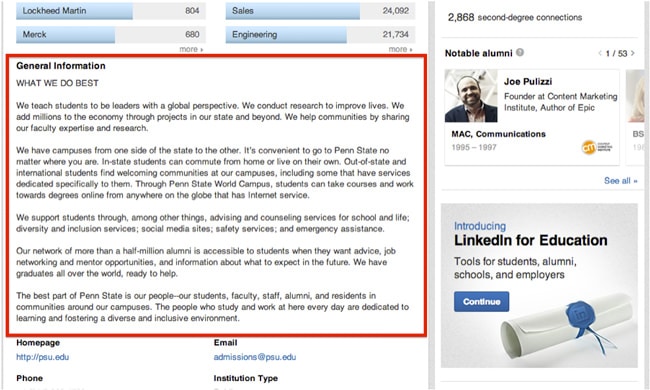
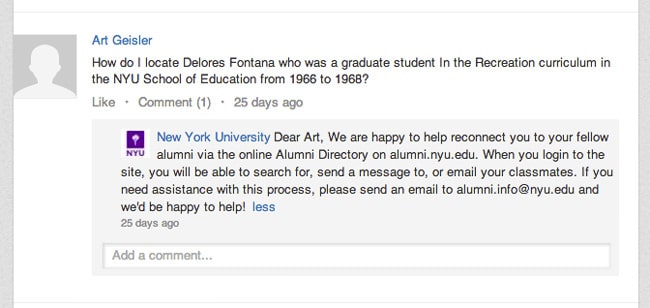
“Already, our members in dozens of locations including Costa Rica, Malaysia, Singapore, Sweden, United Arab Emirates and the United Kingdom, use LinkedIn more on their mobile devices than on their desktop computers. Every day we see an average of 15 million profile views, 1.45 million job views and 44,000 job applications in over 200 countries through mobile.”
Your University Page
Our earlier article on University Pages highlights a number of best practices for building and maintaining your institutional profile on LinkedIn as well as integrating your page into other online and offline recruitment activities.
For additional background on content marketing on LinkedIn University Pages, please see this presentation from the recent EducationConnect conference in New York City.
And just for fun, we'll sign off with LinkedIn's "Then & Now" infographic:
















